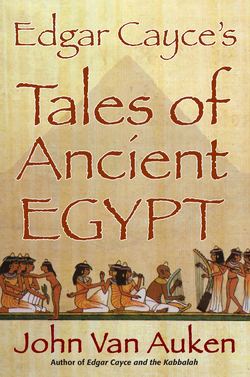Читать книгу Edgar Cayce's Tales of Ancient Egypt - John Van Auken - Страница 7
На сайте Литреса книга снята с продажи.
ОглавлениеINTRODUCTION
Edgar Cayce gave over fourteen thousand readings. They were termed “readings” because it was believed that he was reading minds, reading the Akashic records or The Book of Life, reading the so-called collective unconsciousness, and even reading God’s all-knowing mind, which he referred to as the Universal Consciousness. Of these more than fourteen thousand readings, 581 contained content about ancient Egypt. Much of this content came in the form of past-life readings for souls seeking to know what karmic influences were affecting this present incarnation. From Cayce’s perspective, reincarnation was a natural process of soul life and soul growth. Not only were souls living today that had had incarnations during ancient times, but these same souls had had sojourns in heavenly realms in-between their earthly incarnations.
In order to give one of these readings, he needed to make a transition from his normal state of consciousness into a sleep-like state (this was one of the reasons for his nickname “The Sleeping Prophet”), and then guide his deeper consciousness to a condition in which he could convey information and respond to questions. The guiding stage of his process required the assistance of a conductor, usually his wife, but occasionally others. The conductors would give him a strong, hypnotic-like suggestion when they noticed his breathing getting deeper and his eye beginning rapid-eye-movement (the REM state), an indicator that he was close to the dream state. The suggestion given changed over the years as he and his little band of helpers learned more about the process and the nature of soul life. The following are two examples (GC is Gertrude Cayce, his wife). Personal names were replaced with file numbers to provide privacy while allowing the readings to be published:
GC: You will have before you the entity, [2441], born July 23, 1905 in Kane, Penna. The entity now seeks a Mental and Spiritual Reading, with information, advice, and guidance as to making practical her spiritual, mental, and material-physical abilities. You will then answer the questions she submits, as I ask them.
GC: You will give the relation of this entity [808] and the universe, and the universal forces; giving the conditions which are as personalities, latent and exhibited in the present life; also the former appearances in the earth plane, giving time, place and the name, and that in each life which built or retarded the development for the entity; giving the abilities of the present entity, that to which it may attain, and how. You will answer the questions, as I ask them.
These suggestions were usually followed by a quiet pause, then the “sleeping” Cayce would respond, and his stenographer Gladys Davis Turner would take it all down in shorthand, later typing it up and storing a copy in the organization’s files. The collection of readings is now available on CD-ROM with text-search software, allowing anyone to search the whole of the Cayce work.
The Edgar Cayce readings were in the biblical language of the King James Bible, using “thees” and “thous” and the like. They were also in a linguistic structure that forced a reader to slow down and follow carefully the wording and order of topics being conveyed. In some cases in this book I have edited a Cayce reading for clarity and focus on the point being considered. However, when we do recite a reading, slow down and read it carefully. Despite the difficulty in reading these, there are times when it is worth reading Cayce’s original storytelling of people, places, and events.
Here is a brief overview of the conventions used in this book. These stories are composed of various parts of multiple readings. These particular reading numbers are found in the Appendix which contains the key readings for each chapter. Occasionally, there are reading numbers found in the text, which appear after exact quotes from the specific reading cited. In addition, I have blended ancient Egyptian myths and legends with Cayce’s stories to make for a more interesting book. In order to avoid confusion, these various sources are separated by three em-dashes: — — —. The text is a balanced interplay between the Egyptian legends and the Cayce readings.
The headquarters of the organization that grew up around Cayce and his work is located on five acres in Virginia Beach, Virginia. It is the Association for Research and Enlightenment, better known as the A.R.E. Along with this organization developed the Edgar Cayce Foundation (ECF), Atlantic University (AU), and the Cayce-Reilly School of Massotherapy (massage and hydrotherapies). There is also a camp in the Blue Ridge Mountains of Virginia. Conferences, seminars, retreats, and workshops are conducted at the A.R.E. and throughout an international network of local teams. The A.R.E. has a large web site at EdgarCayce.org. The Association also conducts tours each year to various sacred sites around the world. The address of the headquarters is A.R.E., 215 67th Street, Virginia Beach, VA 23451 USA, and its phone number is 757-428-3588. There is also a toll-free number 800-333-4499.
According to Cayce’s own readings, the work of Edgar Cayce and those souls associated with him began in ancient Egypt. This book is about those times and the spiritual-mental dynamics that were set in motion so long ago and continue to influence souls today.
